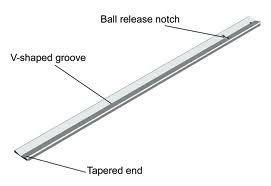By the numbers
In a recent article published by the USGA, they cited the speeds for the 1978 US Open, held at Cherry Hills Country Club, ranged from 9’ on the Stimpmeter on Thursday to a (then) lightning fast 9' 8" on Sunday!
Clearly, we’ve seen dramatic increases in green speed, and not just at major tournament venues. When Laurel Creek hosted the Nike Tour event in 1996, the required green speed was 10' 6"— over a foot faster than Open speeds from 1978. And where are we today? On a daily basis, Laurel Creek’s greens consistently exceed the speeds for the '78 US Open and Nike event by a wide margin. Average weekday green speeds are over 10', weekends are over 11', and greens can top 12' for tournaments.
Good or bad?
So, are these speeds good for the game of golf? The answer probably depends on who you ask. Some will tell you that slower greens required more putting skill than fast greens. However, many golfers today enjoy being able to start their ball on a line and just watch it continue to roll until it drops out of sight.
A definite downside to faster greens is the loss of pin placements on older courses. Small, severely sloped greens which were designed 100 years ago may be limited to two or three "fair" hole locations when the greens are quick. Another issue with super fast greens is that it can slow play when golfers must look at each putt from every angle, and three (or four) putting becomes commonplace.
How do they do that?
So, how have these speed changes been achieved? Simply, through the use of many different forms of technology. This includes breeding for improved varieties of turfgrass which can tolerate lower heights of cut, better growing mediums, with better drainage, more accurate irrigation, better plant protectants, the use of plant growth regulators, regular rolling, and precision mowing equipment.
Still, from a maintenance perspective, keeping a plant alive when mowed at .100", requires much greater inputs than a generation ago when .150" was the norm for private clubs and public courses often mowed at .250". The downside of lower heights is less leaf surface for photosynthesis, which leads to a shorter root system, and ultimately, less margin for error. This is why the phrase, “speed kills,” doesn’t just apply to cars.
The future
Industry professionals often ask, why do we push our greens to the edge? The answer is probably, because we can. The tools mentioned above along with golfers’ desire for faster greens has created this dramatic change.
Industry professionals often ask, why do we push our greens to the edge? The answer is probably, because we can. The tools mentioned above along with golfers’ desire for faster greens has created this dramatic change.
Like the golf ball that keeps rolling and rolling, many
people wonder if speed increases will ever stop. It’s hard to think that we will ever turn
things back to the green speeds of the 1960s or 1970s. A point to ponder
though is what will the expectations be for the next generation? Today's
junior golfers are learning the game on greens which run 10'+ on a daily basis.
Will they be expecting greens to be 18' for their Member-Guest
event?
Again, just because we can do it, doesn't make it a good
thing. Looking back to Payne Stewart's problems at The Olympic Club in
1998, and the 2004 Open at Shinnecock, things have really changed from the '78
Open setup...and faster isn’t always better.
 |
| The Stimpmeter |

No comments:
Post a Comment